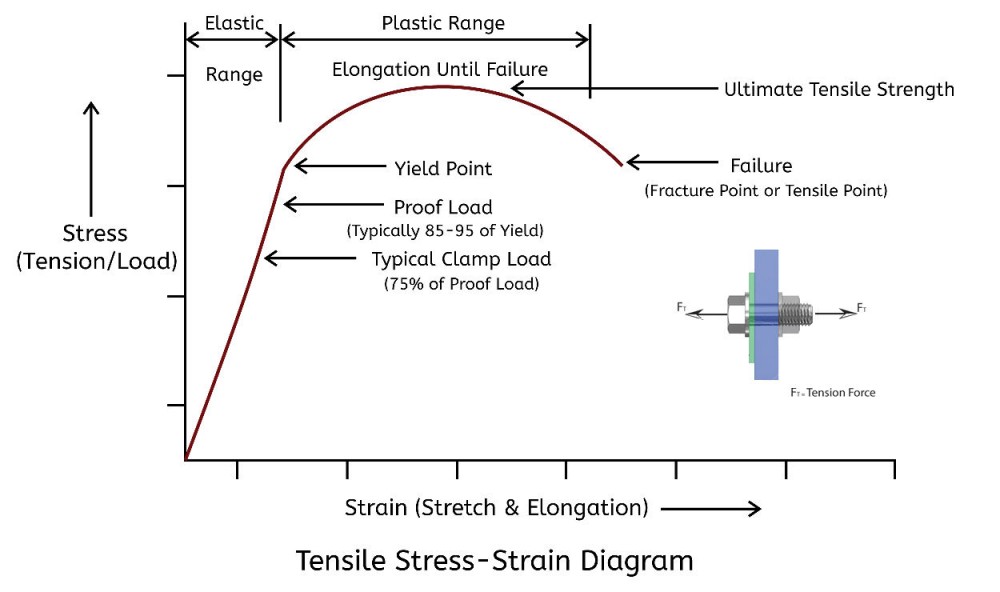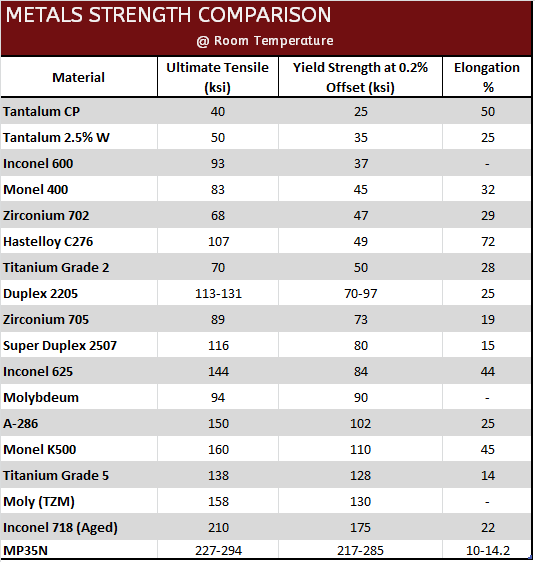 One of the most common questions we get at Extreme Bolt & Fastener is “Which material is stronger?” People instinctively would like to compare the tensile strengths of various specialty metal fasteners to get the strongest one for their application. While this may seem like a reasonable thing to do, this would be the equivalent of ranking profession arm wrestlers by how much force it takes to rip there arm completely off.
One of the most common questions we get at Extreme Bolt & Fastener is “Which material is stronger?” People instinctively would like to compare the tensile strengths of various specialty metal fasteners to get the strongest one for their application. While this may seem like a reasonable thing to do, this would be the equivalent of ranking profession arm wrestlers by how much force it takes to rip there arm completely off.
To really understand if the strength of a fastener is sufficient in an application, one must be familiar with the yield strength of a material. So the technical definition of yield strength is the measure of when the material plastically deforms by 0.2%. In other words, the fastener has permanently deformed and has begun to fail. In the case of the arm wrestler, they are loosing the match and their arm is moving backwards, but their arm is still intact to compete another day.
This is very different than the ultimate tensile strength which measures the max load that the material could achieve in a test environment. While the ultimate tensile strength of a material is higher than the yield strength, it is a condition that hopefully your fasteners will never see as it represents catastrophic failure or the equivalent of ripping off the arm wrestlers arm.
Figure 1 shows the relationship of yield strength to ultimate tensile strength. Another way to envision this relationship is if a load is applied to any point less than the yield strength and then removed, the fastener will return to its original dimensions (elastic deformation). However in the case of the ultimate tensile strength, once this point on the curve is reached the fastener would be permanently and severely deformed.
Now that we hopefully convinced you of the importance of yield strength over ultimate tensile strength, another thing to consider when evaluating the yield strength is the operating temperature. Fastener yield strength is a function of temperature and needs to be considered especially at elevated temperatures. You can find specific yield vs temperature information by following the links for each specialty metal of interest.
- A-286
- Duplex (2205, 2507)
- Hastelloy (C276/B2,C22)
- Inconel (600,625,718,725)
- Molybdenum
- Monel (400, K500)
- MP35N
- Tantalum
- Titanium (2, 5)
- Zirconium (702, 705)
Other factors that do play a role in the final yield strength of a fastener, is the amount of work that has been put into the metal. This “work” is dependent on several things such as: starting material size & form, thread rolling, forging, heat treating and machining. Therefore it is important for critical strength applications that the actual yield strength of a sample in its final form be measured.
For a comparison of specialty metal tensile and yield data see Figure 2 and for more complete information, visit our high strength fasteners pages at Extreme Bolt & Fastener.

Figure 1

Figure 2
